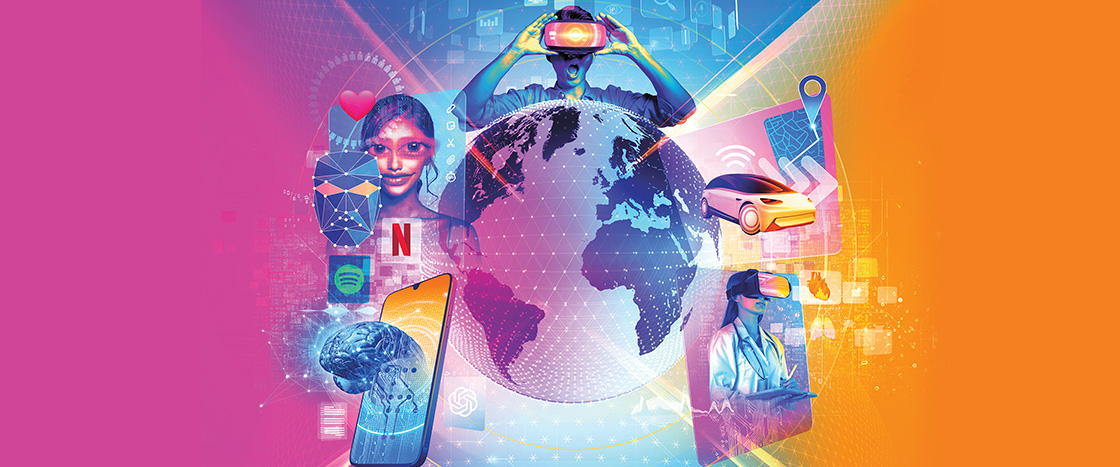A self-driving car. The virtual assistant Alexa. The movies recommended for you on Disney+. What do these things have in common? They’re all powered by artificial intelligence, or AI.
AI is a technology that allows computers and other machines to do tasks that typically require a human’s ability to think or learn.
In recent years, AI has become more powerful than ever. AI-powered chatbots, like ChatGPT, can carry on humanlike conversations. You can ask them to do all sorts of things. Tell a joke? Check. Write a song in the style of Taylor Swift? Check. Other AI tools can create images and art.
For some people, AI is exciting. They say it could be key to solving some of the world’s biggest problems. But 41 percent of Americans think that AI will do more harm than good.
What do you think?
Keep reading to explore the future of this technology— and what it might mean for you.
A self-driving car. The virtual assistant Alexa. Movies recommended for you on Disney+. What do these things have in common? They’re all powered by artificial intelligence, or AI. AI is a technology that allows computers and other machines to do tasks that usually require a human’s ability to think or learn.
In recent years, AI has become more powerful than ever. There are now AI-powered chatbots, like ChatGPT. These chatbots can have conversations that seem human. You can ask them to do all sorts of things. Tell a joke? Check. Write a song in the style of Taylor Swift? Check. Other AI tools can create images and art.
For some people, AI is exciting. They say it could be key to solving some of the world’s biggest problems. But 41 percent of Americans think that AI will do more harm than good.
What do you think?
Keep reading to explore the future of this technology— and what it might mean for you.

